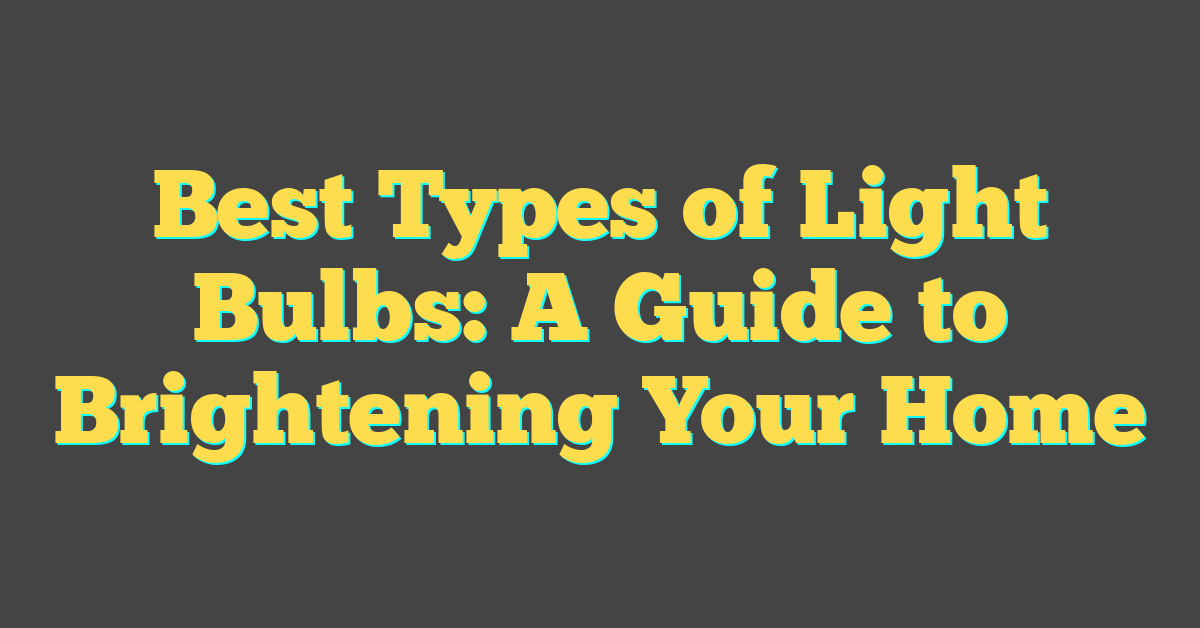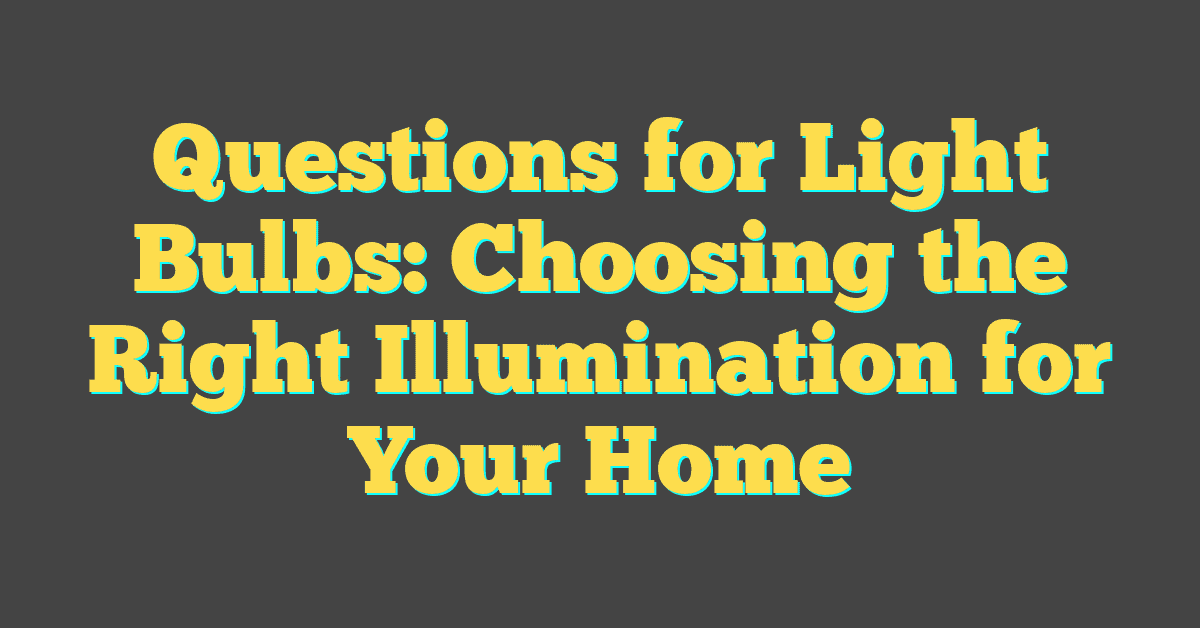You’ve probably never given much thought to the humble light bulb above you. It’s just there, silently illuminating your space. But could this everyday object be a hidden fire hazard in your home?
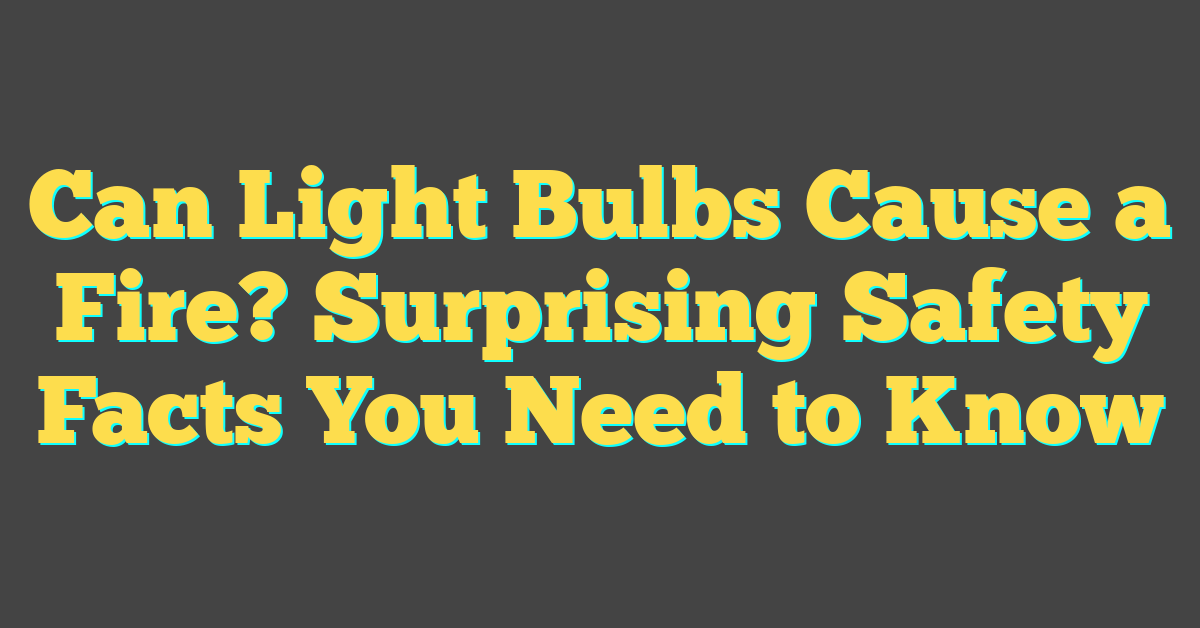
Imagine this: you’re about to drift off to sleep when a faint smell of smoke tickles your nose. You’ve checked the stove, the iron, but have you ever considered your light fixtures? It’s time to shed some light on whether light bulbs can really spark a blaze.
Common Causes of Fires
When you’re tackling your home DIY projects, it’s crucial to be aware of the different ways a fire can start. Light bulbs are one of the many potential hazards in a household. But they’re not alone. There are several common causes of fires that demand your attention.
Faulty Electrical Systems: One of the top culprits is outdated or improperly installed electrical wiring. Over time, wires can become frayed or damaged, leading to sparks that could ignite a fire. That’s why it’s important to have an electrician review your home’s wiring, especially if it’s an older property.
Overloaded Power Outlets: Plugging too many devices into an outlet can overburden the electrical system. This can cause overheating and potentially lead to a fire. Ensure you’re using power strips with built-in circuit breakers to mitigate this risk.
- Unattended Candles and Cooking: Candles may set the mood, but left unattended, they can quickly turn disastrous. Likewise, unattended stovetops are one of the leading causes of house fires. Always keep an eye on open flames, no matter how small.
- Flammable Liquids: If you’re a DIY enthusiast, you might have paint thinners, gasoline, or other flammable liquids stored in your garage or workshop. Store these substances properly and far from any heat source to prevent combustion.
Heating Equipment: Portable heaters can provide extra warmth but keep them away from combustible materials. Furniture, curtains, and even clothing can catch fire if they’re too close to a heat source.
Remember, fire safety is paramount in all your home improvement ventures. Stay vigilant about these hazards and take the necessary precautions to keep your home safe. By being aware of and addressing these common fire starters, you’ll significantly reduce the risk of a fire breaking out in your home.
Understanding Light Bulbs

You’ve tackled different aspects of fire hazards in the home, but now let’s shine a light on something you might not have given much thought to: light bulbs. The type of light bulbs you choose and how you use them can play a pivotal role in your home’s safety.
Incandescent bulbs, the old school kind that Thomas Edison would recognize, work by heating a wire filament to a temperature that produces light. These bulbs get hot, really hot. In fact, they can reach temperatures high enough to ignite nearby flammable materials. With your love for DIY projects, you might have these around for their warm glow, but always ensure they are not in contact with anything that can burn.
Compact fluorescent lamps (CFLs), which you likely recognize by their spiral design, operate at cooler temperatures than incandescent bulbs but have their own precautions. If the base of a CFL becomes too hot, it can lead to a fire. It’s always best to keep these bulbs in open fixtures to allow heat to dissipate.
Let’s talk about LED bulbs. They’re the new gen in lighting technology, and they’re fantastic for energy savings and longevity. LEDs emit very little heat, making them one of the safer options for your creative lighting setups. Still, you shouldn’t disregard proper installation and the quality of the fixture they’re used in.
Regardless of the bulb type, it’s essential to:
- Use the correct wattage for your light fixture
- Give bulbs adequate space to ventilate
- Never leave bare bulbs in closets or other small, confined spaces
- Avoid draping materials over lampshades or near light sources
Being switched on about light bulb safety will save you from the potential sparks that can ruin more than just a romantic dinner at home. Remember, light bulbs are more than just a bright idea; they’re a crucial component in maintaining a safe environment for your creative flare to shine. Keep an eye on the bulb types and their applications to ensure your home remains a safe haven for all your DIY lighting endeavors.
Types of Light Bulbs
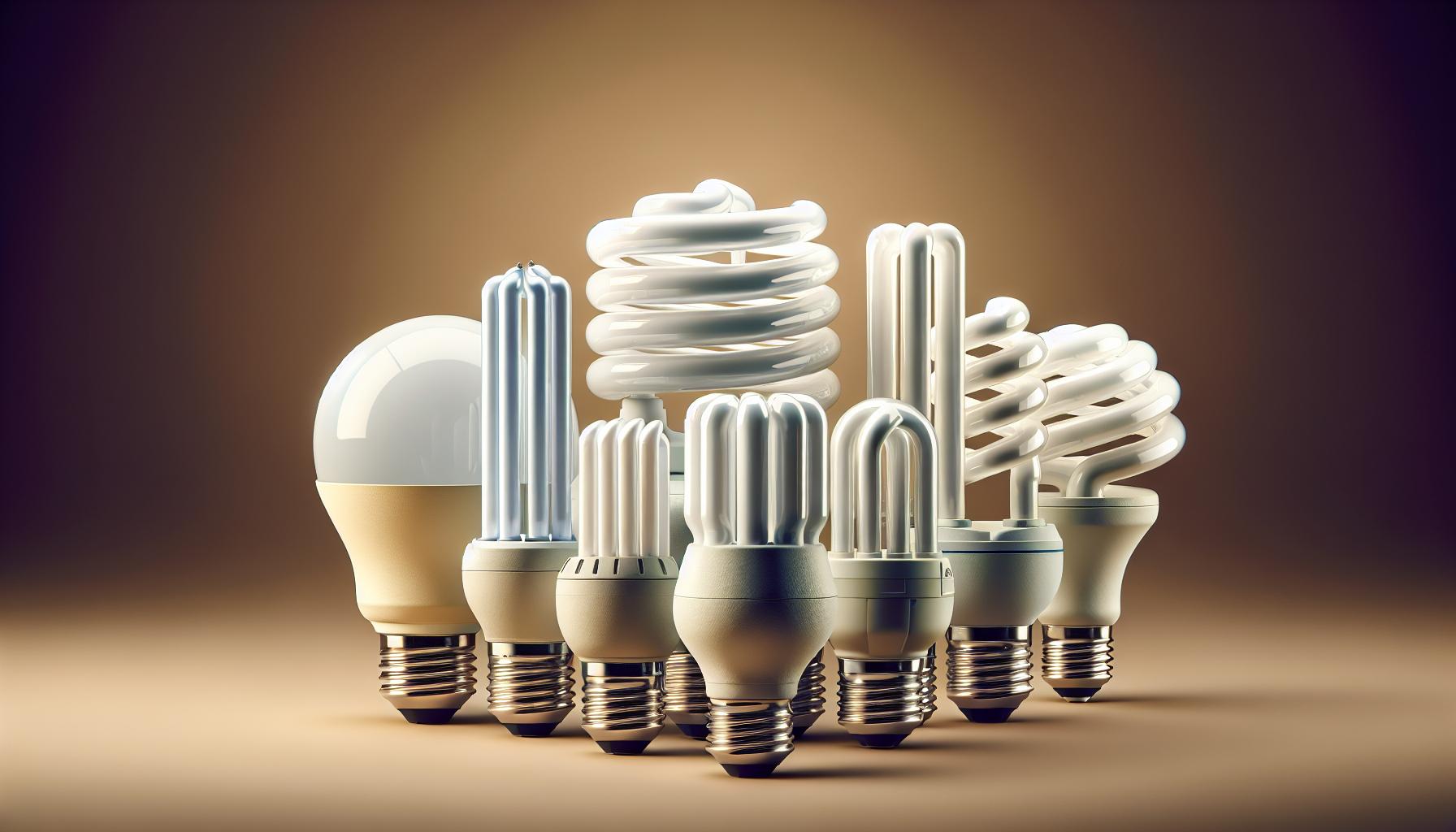
« Are Tail Light Bulbs Universal? Find Your Perfect Match for Safety & Fit
Is Light Bulb Bad for You? Shocking Effects on Sleep & Eyestrain »
When embarking on DIY projects that involve lighting, you’re bound to encounter various types of light bulbs. Each bulb comes with its specifications and considerations, especially when weighing the risk of fire hazards.
Incandescent bulbs have been around for ages and are the type you’d find in any classic film. They work by heating a filament inside the bulb until it glows. Although their warmth adds a quaint charm to any room, these bulbs aren’t just metaphorically warm—they literally get hot. In fact, they release 90% of their energy as heat, making them a notable concern when in contact with flammable materials.
Next in line are Compact Fluorescent Lamps or CFLs. They’re the ones twisted into a spiral shape that has come to symbolize energy efficiency. They operate quite differently from their incandescent brothers, using an electric current driven through a tube containing argon and a small amount of mercury vapor. This creates ultraviolet light that quickly translates into visible light. CFLs run cooler than incandescent bulbs but have their own set of risks. If broken, they can release harmful mercury, and their ballasts can overheat if they’re not properly installed or used in an enclosed fixture.
LED bulbs are the prodigies of the light bulb family—exceptionally energy-efficient and long-lasting. They use a semiconductor to convert electricity into light, and because they don’t rely on a filament or gas to produce light, they manage to stay cool to the touch after hours of use. But be careful with your choice of LED fixtures; poorly designed ones can overheat, especially in enclosed spaces, though this is much less common than with other bulb types.
Remember, no matter what type of bulb you’re dealing with, you should always follow the manufacturer’s instructions and consider their compatibility with your light fixtures. Good practice is to check that your bulbs have proper clearance from combustible materials and are suited for their intended use. Always be vigilant about their condition and placement to contribute to a safe and fire-free home environment.
Assessing each type of light bulb’s potential fire risk in DIY projects is not just about choosing the right bulb—it’s about understanding their characteristics and respecting the role they play in your home’s safety and ambiance.
Incandescent Bulbs and Fire Risk

When you’re tackling your next DIY project, it’s vital to understand the specifics of the materials you’re working with. Let’s talk about incandescent bulbs. These are the classic bulbs that have been around for ages, known for their warm glow. However, they’re not as innocent as they seem. Most of the energy they consume is emitted as heat rather than light, making them more than just a touch warm—they can get hot enough to be a concern.
Here are a few critical points to keep in mind about incandescent bulbs:
- They operate at much higher temperatures than their modern counterparts.
- The heat they emit can ignite flammable materials if they’re nearby.
- Dust accumulation on the bulb can create a risk of scorching or even fire.
It’s essential to use incandescent bulbs within the parameters they’re designed for. For instance, if a lamp suggests a maximum of 60 watts, sticking to that recommendation isn’t just good practice; it’s a safety measure. Exceeding the wattage can lead to overheating and, potentially, fire.
Moreover, consider their placement. These bulbs should not be in contact with anything that can catch fire easily like drapes, beddings, or decorations. Adequate air circulation is necessary to disperse the heat. It’s why open fixtures are preferable when using incandescent bulbs. Ensuring that your choice of light bulb aligns with the rating and design of your light fixture is more than good design sense—it’s a commitment to safety.
Let’s not forget about the bulb’s condition. A bulb with a flimsy filament or a compromised structure due to extended use needs to be replaced promptly. Regular checks are your first defense against potential fire risks. Remember, safe lighting isn’t just about the initial installation; it’s an ongoing commitment to your home’s safety.
LED Bulbs and Fire Safety
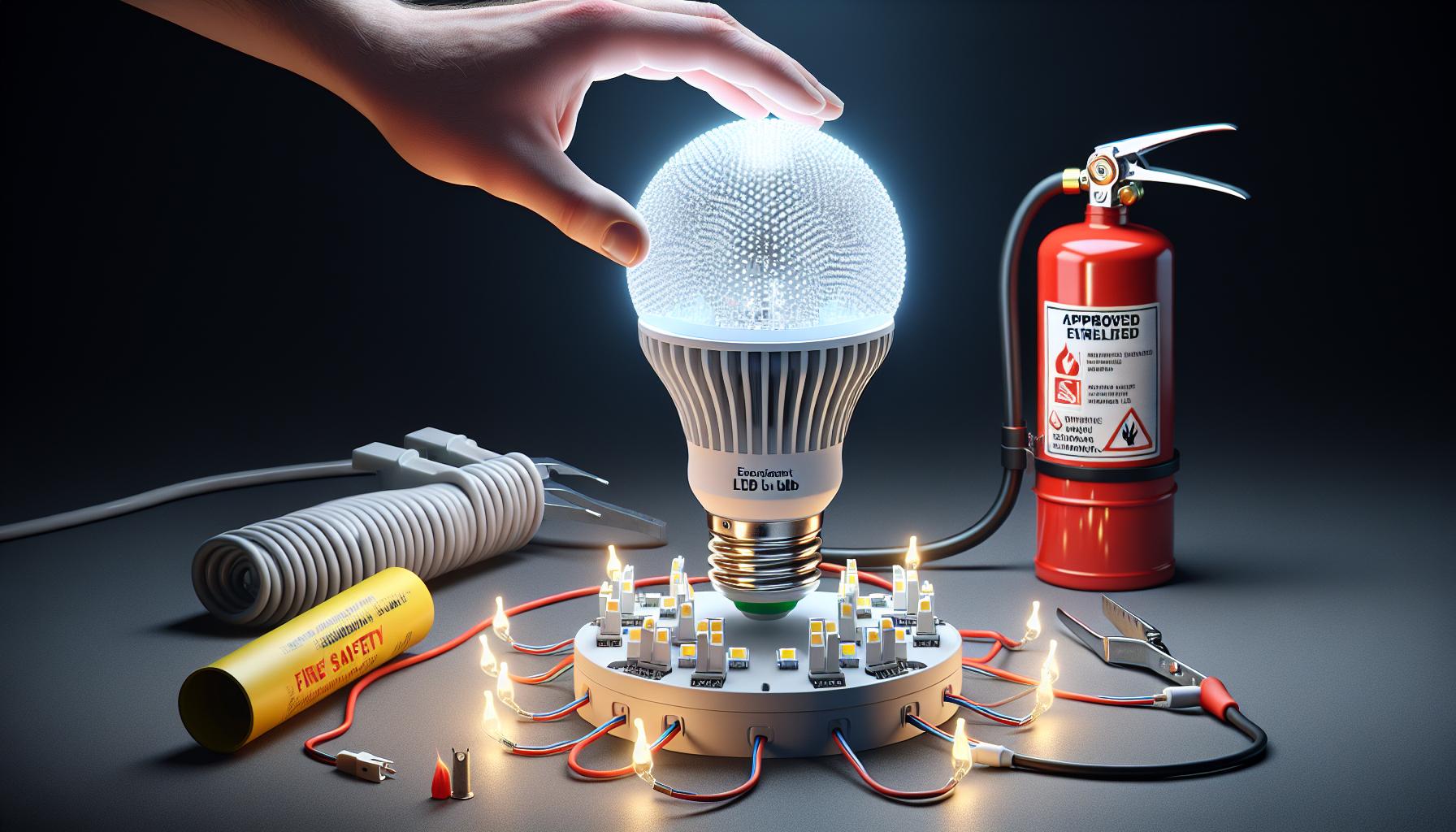
When you’re knee-deep in your latest DIY home project, you’re likely considering style, efficiency, and the perfect lighting to showcase your hard work. LED bulbs are a popular choice due to their long life span and energy-saving prowess, but let’s talk about their performance in the realm of fire safety.
Unlike incandescent bulbs that we discussed earlier, LEDs produce light in a significantly different way. These bulbs emit light by passing an electrical current through a microchip, which illuminates the tiny light sources we call LEDs, and voila—light is created without much heat. This is why LED bulbs are generally cool to the touch, even after hours of being on. Consequently, they’re a safer bet when it comes to reducing the risk of fires caused by overheated lighting.
Yet, while LEDs are inherently cool-running, they’re not without fault. They do contain driver components that can occasionally overheat, especially if they’re housed in fixtures not intended for LED use or if they’re covered with insulating materials. When integrating LEDs into your DIY spaces, ensure the following to maintain a fire-safe environment:
- Use bulbs that have a proper heat sink to dissipate heat away from the bulb.
- Only place LEDs in fixtures rated for their use.
- Keep them away from easily ignitable materials, like certain fabrics and paper.
Remember, although the risk is low, it’s essential to purchase quality LED bulbs from reputable manufacturers. Cheaper, lower-quality LEDs may not be designed with appropriate thermal management, potentially causing the driver components to overheat and, in rare cases, ignite. Always look for certification marks from organizations like Underwriters Laboratories (UL), which verify a product’s safety standards.
Armed with the right information and best practices, you’ll not only light up your home beautifully but also safely, ready for whatever innovative idea you’re illuminating next.
Precautions to Prevent Fires
With your knack for home DIY projects and a love for perfecting your space with the right lighting, it’s essential to bake safety right into your creative process. Light bulb safety isn’t just about the bulbs themselves; it’s the entire ecosystem of your lighting setup. Let’s take a look at some precautions that’ll keep you safe—not to mention, help preserve all that hard work you put into your DIY endeavors.
First off, always check the wattage of your bulbs and fixtures. It’s like making sure you’re picking the right watt bulb for your lamp—simply match the fixture’s maximum wattage with the bulb you’re using. Why’s this important? Well, a bulb that exceeds the fixture’s wattage can generate more heat than what the fixture is designed to handle, and you know what that means – a higher fire risk.
Next, keep an eye on insulation. Insulation is great for keeping your home warm, but too much of a good thing isn’t always better. If you’re installing light fixtures in a space with insulation, consider using insulation-compatible (IC) rated fixtures. These are specifically designed to be in direct contact with insulation without turning your ceiling into a sauna.
Use bulbs as they’re intended – seems straightforward, right? LED bulbs in a lamp designed for LEDs, halogens in their respective spots, and so on. Also, even though LEDs are cool to the touch, they still need air circulation to prevent overheating. So whatever you’re doing, avoid draping fabrics or piling up flammable materials near your bulbs.
- Check bulb and fixture wattage compatibility
- Pay attention to where and how you’re using insulation
- Ensure bulbs are paired with correct fixtures
- Promote proper air circulation around bulbs
Lastly, get your hands on bulbs from reputable manufacturers. That bargain bin deal at the hardware store might look tempting, but premium brands with a solid track record often include failsafes like automatic shut-offs to nip potential fire hazards in the bud.
By meshing together your DIY passion with these precautions, you’re setting yourself up not just for a well-lit space but a safe one too. Remember, every detail counts, and when it comes to fire safety, cutting corners just isn’t worth the risk.
Conclusion
So there you have it! You’re now well-equipped with the knowledge to keep your DIY lighting projects safe and fire-free. Remember, while LED bulbs are your best bet for reducing fire risks, they’re not foolproof. Proper usage is key. Make sure you’re matching bulbs to the right fixtures, promoting good air circulation, and buying from trusted sources. Stay safe and let your creativity shine bright—without the unwanted sparks!
Frequently Asked Questions
What are the potential fire hazards of using light bulbs in DIY projects?
Incandescent bulbs can generate significant heat and cause a fire risk in DIY projects, especially when they are near flammable materials. Proper usage and precaution are necessary to avoid potential hazards.
How do LED bulbs compare in terms of fire safety?
LED bulbs are safer in terms of fire risk because they operate at cooler temperatures. However, they can overheat and pose a threat if not used in proper fixtures or if they’re covered with insulating materials.
Can using the wrong type of fixture cause LED bulbs to overheat?
Yes, LED bulbs can overheat if they are placed in fixtures not rated for them or if the fixtures are not equipped with appropriate heat sinks, leading to increased fire risk.
What are some important precautions to prevent light bulb-related fires?
To prevent fires, ensure bulb and fixture wattage compatibility, use insulation-compatible fixtures, pair bulbs with correct fixtures, promote proper air circulation around bulbs, and buy from reputable manufacturers.
Is it important to buy bulbs from well-known manufacturers?
Purchasing bulbs from reputable manufacturers can ensure higher quality and safety standards, which contribute to reduced fire risk and overall safety.

